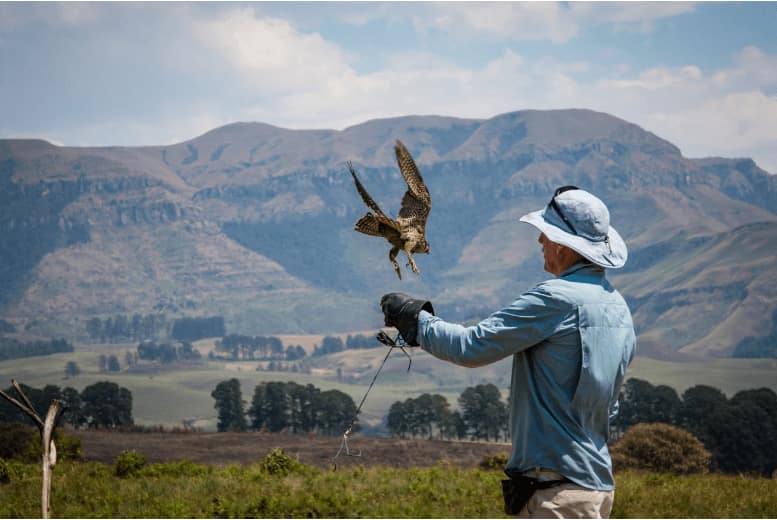Training your pet bird can be an enjoyable and fulfilling journey that enhances your connection while keeping your bird mentally active. Whether you own a parrot, budgie, or cockatiel, the right training approach ensures a well-behaved and happy companion. This guide presents practical bird training tips for beginners to help you teach your bird successfully.
Many pet birds possess remarkable intelligence, making them highly responsive to training. With the right approach, they can learn various skills, from performing tricks to mimicking words and phrases. Beyond entertainment, training enhances mental stimulation, reduces undesirable behaviors, and strengthens your bond with your feathered companion. However, successful training requires patience, consistency, and an understanding of your bird’s unique personality.

Essential Bird Training Tips: Strengthening Your Bond Through Effective Techniques
Before diving into training, take time to understand how birds communicate through their body language and vocalizations. Recognizing your bird’s mood will make sessions more effective and stress-free.
If you’re looking to improve your bird’s training experience, consider these five essential tips:
1. Recognize That Some Birds Are Easier to Train Than Others
Certain bird species, such as parakeets, conures, and cockatiels, are naturally more receptive to training. In contrast, African grey parrots, macaws, cockatoos, and Amazon parrots may require more time and effort. Finches and canaries, known for their independent nature, can be particularly challenging to train. Additionally, younger birds and those accustomed to regular human interaction tend to pick up training faster, while older or timid birds may need extra patience and care. Understanding your bird’s temperament will help you set realistic expectations for their training progress.
2. Build a Foundation of Trust
Before beginning any training, it’s crucial to establish a trusting relationship with your bird. Gaining their confidence involves gentle, consistent interaction. Approach your bird calmly, speak in a soothing tone, and allow them to become comfortable with your presence. Offering treats as positive reinforcement can also help encourage trust and engagement.
3. Set Up an Ideal Training Environment
Creating the right atmosphere is essential for effective training sessions. Ensure your bird is in a calm and relaxed state before beginning. If they appear agitated—flapping their wings or attempting to bite—give them time to settle down before proceeding. Choose a quiet, well-lit space free from distractions, and always close windows and doors to ensure safety. A comfortable environment enhances focus and receptivity to training.
4. Start with the “Step Up” Command
The “step up” command is a fundamental skill that lays the groundwork for more advanced training. Your bird should already feel at ease with your hand before attempting this step. Slowly extend your finger toward them and gently encourage them to step up. When they respond correctly, reward them with praise and a treat. Repeating this process consistently will reinforce the behavior and build a solid training foundation.
5. Keep Training Sessions Positive and Enjoyable
A positive attitude is key to successful bird training. Avoid raising your voice or showing frustration if your bird isn’t responding as expected—simply try again later. Incorporating playtime before training can help put your bird in a receptive mood, and always conclude sessions on a positive note with a treat, whether or not progress was made. This reinforces a sense of fun and encourages continued learning.
Bird Training Guide: Are Birds Easy to Train?
Every bird is unique, and several factors influence how easily a bird can be trained. Some birds pick up commands quickly, while others may require more time, patience, and consistency.
Key factors that affect trainability include:
- Species: Some birds are naturally more receptive to training.
- Age: Younger birds tend to learn faster than older birds.
- Handling History: Birds accustomed to human interaction usually respond better to training.
Bird Species That Are Easier to Train:
- Budgerigars (Budgies)
- Cockatiels
- Conures
- Indian Ringneck Parrots
- Young birds and those with frequent human interaction
Bird Species That Are More Challenging to Train:
Birds That Are Very Difficult to Train:
- Finches
- Canaries
- Doves
- Older birds or naturally shy species
Are Birds Intelligent Enough to Be Trained?
Birds are highly intelligent, particularly parrots. Many species can mimic human speech, recognize patterns, and even solve problems. Some birds, such as African Grey Parrots and Crows, exhibit intelligence comparable to young children. Their ability to use tools, count, and recall events makes them highly trainable—although some birds can also be quite stubborn!
How to Train Bird Training Tips for Beginners: Step-by-Step Guide
1. Build a Strong Bond First
Before starting any formal training, your bird needs to trust you. Spend time playing, talking, and offering treats to create a positive association with your presence. A bird that feels comfortable and safe is more likely to engage in training.
2. Teach the “Step Up” Command
One of the first and most important commands for any bird is “step up.” This command helps you handle your bird safely and is essential for everyday interactions, such as vet visits.
Steps to Teach “Step Up”
- Start with a Perch: Have your bird sit on a steady perch or another curved surface.
- Introduce Your Finger: Gently press your finger against their lower chest. This naturally encourages them to lift a foot.
- Encourage Movement: Once they lift their foot, slide your finger underneath and gently lift.
- Give the Command: Clearly say, “Step up” as they move onto your finger.
- Reinforce the Behavior: Reward with praise and a treat. Repeat multiple times daily for reinforcement.
Pro Tip: Confidence is key! If you hesitate, your bird may sense it and become nervous.
3. Expand Training to Different Hands & Surfaces
Birds are creatures of habit, so it’s important to show them that “step up” applies to both hands and different settings. Once your bird is consistent with you, allow other family members to practice the command as well.
4. Introduce the Training Stick
Once your bird reliably steps onto your hand, you can teach them to step onto a stick. This is especially useful for birds that are uncomfortable with direct hand contact. Introduce the stick slowly, allowing your bird to explore it at their own pace.
5. Progress to Advanced Training
Once your bird masters the basics, you can introduce more fun tricks and commands!
Popular Tricks to Teach Birds:
- Talking: Start with simple words like “Hello” or their name. Repetition is key.
- Waving: Teach them to lift a foot as a greeting.
- Dancing: Encourage movement to music.
- Spinning: Use treats to guide them in a circle.
- Fetch: Train them to pick up and return small objects.
- Playing Dead: Gently guide them into a relaxed lying-down position.
If you’re looking to Bird Training Tips for Beginners, consider these five essential tips:
1. Recognize That Some Birds Are Easier to Train Than Others
Certain bird species, such as parakeets, conures, and cockatiels, are naturally more receptive to training. In contrast, African grey parrots, macaws, cockatoos, and Amazon parrots may require more time and effort. Finches and canaries, known for their independent nature, can be particularly challenging to train. Additionally, younger birds and those accustomed to regular human interaction tend to pick up training faster, while older or timid birds may need extra patience and care. Understanding your bird’s temperament will help you set realistic expectations for their training progress.
2. Build a Foundation of Trust
Before beginning any training, it’s crucial to establish a trusting relationship with your bird. Gaining their confidence involves gentle, consistent interaction. Approach your bird calmly, speak in a soothing tone, and allow them to become comfortable with your presence. Offering treats as positive reinforcement can also help encourage trust and engagement.
3. Set Up an Ideal Training Environment
Creating the right atmosphere is essential for effective training sessions. Ensure your bird is in a calm and relaxed state before beginning. If they appear agitated—flapping their wings or attempting to bite—give them time to settle down before proceeding. Choose a quiet, well-lit space free from distractions, and always close windows and doors to ensure safety. A comfortable environment enhances focus and receptivity to training.
4. Start with the “Step Up” Command
The “step up” command is a fundamental skill that lays the groundwork for more advanced training. Your bird should already feel at ease with your hand before attempting this step. Slowly extend your finger toward them and gently encourage them to step up. When they respond correctly, reward them with praise and a treat. Repeating this process consistently will reinforce the behavior and build a solid training foundation.
5. Keep Training Sessions Positive and Enjoyable
A positive attitude is key to successful bird training. Avoid raising your voice or showing frustration if your bird isn’t responding as expected—simply try again later. Incorporating playtime before training can help put your bird in a receptive mood, and always conclude sessions on a positive note with a treat, whether or not progress was made. This reinforces a sense of fun and encourages continued learning.
Final Tips for Successful Training
- Keep sessions short: Birds have short attention spans, so 5-10 minutes per session is ideal.
- Use positive reinforcement: Treats, praise, and head scratches work wonders!
- Be patient: Some birds learn quickly, while others take weeks or months.
- Stay consistent: Practice daily to reinforce skills.
- Make training fun: A happy bird is a motivated learner!
By using these techniques, your bird can learn everything from essential commands to impressive tricks. With patience, consistency, and a little creativity, your pet bird will continue to surprise you with its intelligence and abilities!












